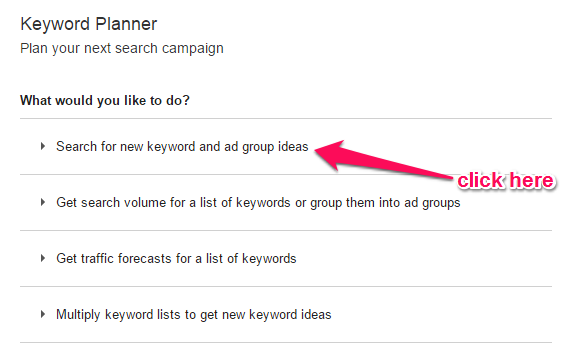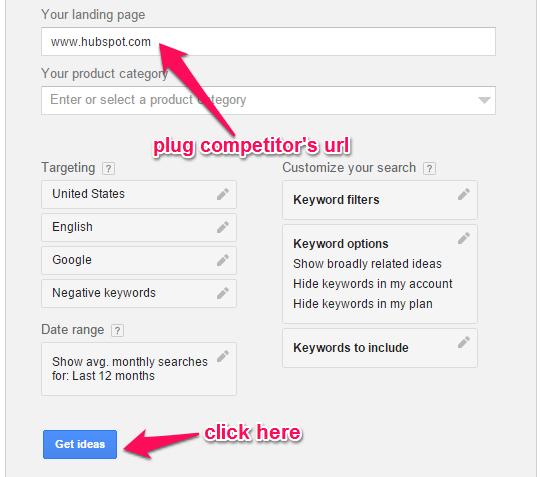The online business world is full of cut-throat competition. Many businesses get discouraged by the level of competition they face, but competition is a good thing for two big reasons:
- If there is a stiff level of competition in a niche or industry, it means there is money to be made. A waning, losing industry wouldn’t have too many businesses competing with each other.
- Second, you can make that competition work for you and your business. Without competitors, you wouldn’t be able to identify the strategies that have been working for them. You’d be inventing the wheel — which requires a whole lot of efforts, time, and resources. With competitors, however, you can just spy on them and see what’s working for their businesses.
We have already discussed the basics of competitor analysis in a previous blog post. If you are not entirely familiar with the concept of competitor analysis, we recommend that you go back, read those blog posts from the beginner and intermediate subcategories, and then come back here.
In this blog post, we discuss practical, actionable, and more advanced tips on how to outdo a competitor in the search engine ranking pages (SERPs).
1. Keyword analysis
Start by doing keyword analysis and identifying their top performing keywords.
If you want to outdo them in the search engine results pages and grab a bigger share of organic traffic for your business, keyword research is imperative.
Here is how you can do that.
Visit the Google Keyword Planner.
Click the “search for new keywords and ad group ideas” — as you can see in the following screenshot.
Paste your target competitor’s website URL and click the ‘Get ideas’ button at the bottom.
Click the ‘Keyword ideas’ tab to reveal your competitor’s best and most important keywords. Since it is the Google Keyword Planner, you would also be able to see the search traffic volume and the level of competition for each keyword.
To confirm, you could also search for these keywords and see your competitor’s website pop up in the Google search engine results pages (SERPs). If you do, make sure to note down the exact web page or blog post that the search engine leads to.
Once you identify these keywords, the idea is to start building content that can overtake your competitor’s. However, before jumping on to that, it is recommended that you spend some time doing the following:
- See if you could find some long-tail keywords related to those keywords that you just found. For instance, if your competitor’s best keywords are head or body keywords, you may find it difficult to replicate that success.
- Try to get creative with the keywords you find. Nothing beats creativity as you’d be doing something different than most of the other competitors would be doing if they find the same information as you have.
If you are using a competitor analysis tool, like SpyFu or Ahrefs, the whole process of keyword analysis becomes a lot easier for you. These competitor analysis tools give you the list of a website’s top performing web pages as well as top performing organic keywords, so you don’t have to do the manual legwork.
2. Use the Skyscraper technique
The Skyscraper technique is a proven strategy to improve your content in reference to a competitor’s web page. Brian Dean from Backlinko introduced this Skyscraper Technique.
The technique has multiple steps. Here is a brief overview of what the Skyscraper technique is:
Step #1: You identify the best performing web pages of your competitors.
Step #2: You create a better web page — longer, richer, more visual.
Step #3: You promote your new web page so that it gets higher social media engagement and backlinks.
If you want to read more about the Skyscraper technique, read this blog post by Brian Dean.
After following the first step in this post, you’d have found the top-performing keywords and the respective web pages (or blog posts) on your competitor’s site.
The idea is that in this step, you create a piece of content that is much better than that of your competitors. There are a few things you could do here:
- Make your blog post longer. Google and other search engines prefer long-form, 2000+ word blog posts.
- However, by making it longer, make sure that you are not adding fluff. Each word and sentence need to add immense value to the reader.
- Add more infographics, images, and video content (if possible) to add more value and increase page engagement.
- Add screenshots or step-by-step images if you are explaining how to do something.
- Can you add some research or a case study that your competitor missed out on? Case studies add credibility and increase the authority of the post as well the website it is on.
For more information on how to improve your content, read the following post:
How to improve your site’s content with competitor analysis.
3. The SEO structure
Once you have identified the keywords and created web pages for those keywords, it is also important to take a look at the SEO structure of your competitor’s web pages.
More specifically, look at the following things:
- The URL structure
- Meta titles
- Meta descriptions
- Alt text attributes
Although not massive, these SEO factors still matter.
Writing good, keyword-optimized URL structures, meta titles, meta descriptions, and alt text can help you get ahead of your competitors.
Make sure you know other businesses in your industry are using them. If they are missing out on it, great! That’s a window of opportunity for you.
4. Website loading speed

Which website loads faster? Yours or your competitor’s?
Website loading speed is an important search engine ranking factor now. If you have an e-commerce store, it affects your website’s search engine rankings as well as its conversion rate.
The bottom line is that if you want to outdo a competitor in the SERPs, your website will have to load faster.
For checking your website’s loading speed, use a tool like Pingdom or GTMetrix. For comparing your site with your competitor’s, use whichloadsfaster.
If you find out that your website is the slower of the two, there are certain steps that you can take to speed up your website:
- Make sure that all the images on your website are fully optimized.
- Use a better hosting plan. Many new websites use a shared hosting plan, but they are not the speediest solutions. If you are serious about your business — or if you are receiving a lot of traffic — consider shifting to a dedicated server.
- Avoid using too many plugins. Too many plugins slow down your website.
- Consider using a CDN for even faster-loading speed.
5. Backlinks
By now, you would have everything in place — the perfect launching platform for your website to overtake your competitors.
Only one thing is missing: backlinks.
Backlinks are one of the most important search engine ranking factors, and you’d need lots of them to beat other businesses in your industry in the search engine results pages.
Use the Skyscraper technique to start reaching out to influencers in your niche and other websites/blogs to build backlinks to your newly created web pages. In the meanwhile, also go out and actively look for other backlinking opportunities. One of the most effective techniques is the broken link strategy.
Here is a step-by-step guide that teaches you how to build high-quality and powerful backlinks with the broken link strategy.
What’s next?
Rinse and repeat.
This is how you outdo your competitors in the search engine ranking pages.
Continue working on these techniques until you achieve the success you wanted.
